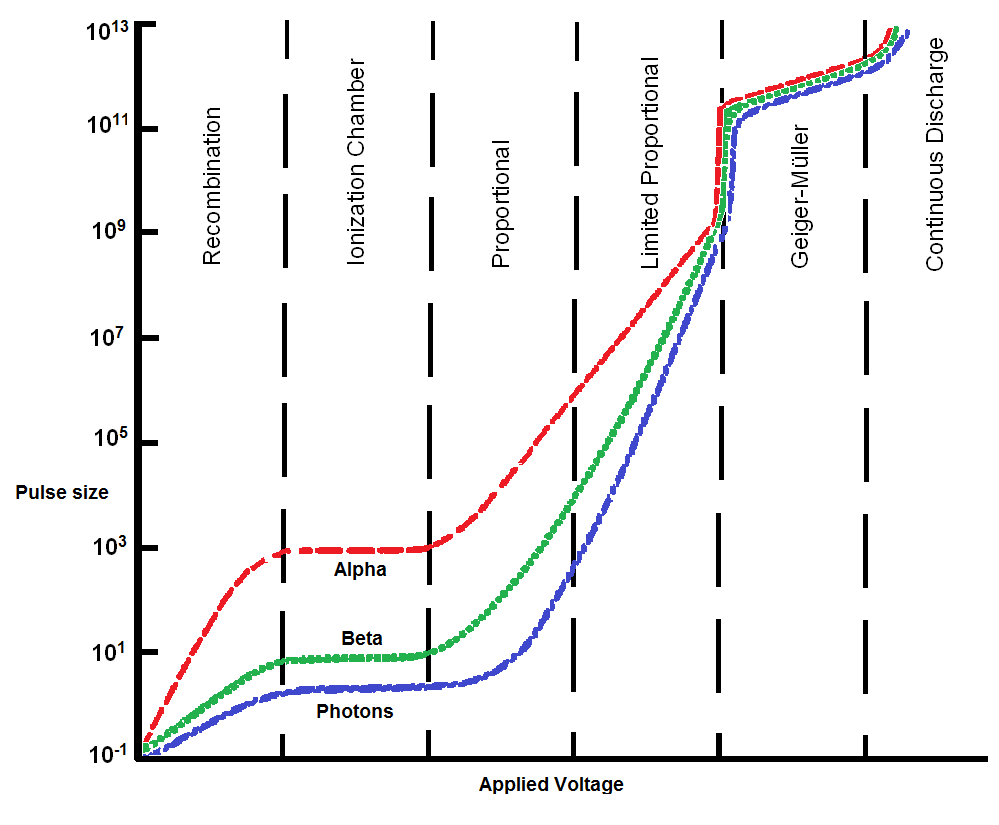3.2.4 Gas filled detectors
Gas-filled detectors consist of a chamber filled with a gas (often noble gases) and two electrodes. The positive electrode is called the anode and is often in the centre of the chamber and electrically insulated from the outer casing. The outer casing of the chamber is often the negative electrode or cathode.
Incoming x-rays enter the detector chamber through a Beryllium window and interact with the walls of the chamber or the gas particles and produce ion pairs. When a voltage is applied between the electrodes, positive ions are attracted towards the negatively charged cathode, and the electrons are attracted towards the positively charged anode. A charge builds up on the anode, causing a voltage change in the circuit. This change in voltage is referred to as a pulse, and the presence of this pulse causes a current to flow in the external circuit. The behavior of the gas will depend on the applied voltage and the geometry of the chamber, giving rise to a few different types of gas detectors (ionization chambers, proportional counters and Geiger-Müller counters).
